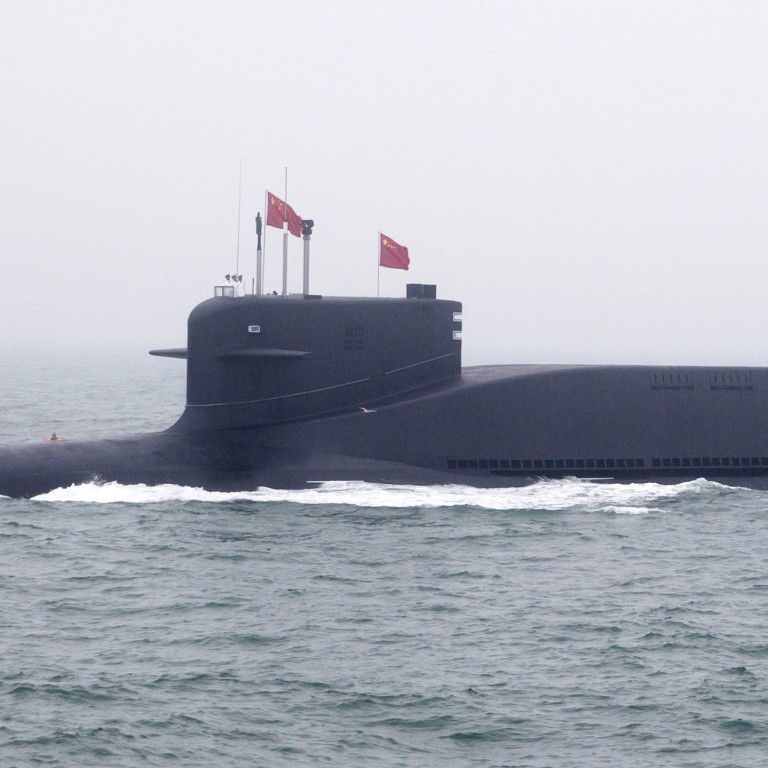
China antenna turns Earth into giant radio station, with signals reaching Guam
- The exact location has not been revealed but signals can reach submarines across vast distances, researchers say
- A joint experiment with Russia confirmed a ‘ping’ from the facility can also travel effectively underground
The exact location of the facility has not been revealed, but is believed to be somewhere in the Dabie Mountains, a protected natural reserve straddling Hubei, Anhui and Henan provinces.
From space, the antenna, which is formed by a network of cables and pylons much like those in ordinary power lines, would look like a giant cross more than 100km (62 miles) long and wide.
But at the ends of those lines, copper nodes are fixed deeply into thick granite. Two powerful underground transmitters – capable of working independently in case one is damaged – charge one megawatt of electrical current and turn the Earth into a giant radio station.
According to a paper published in last month’s Chinese Journal of Ship Research, receiving devices planted 200 metres (700 feet) below the surface on the sea floor can effortlessly pick up signals from the giant antenna 1,300km (800 miles) away – a range that covers the Korean peninsula, Japan, Taiwan and the South China Sea.
The project’s lead engineer Zha Ming and his colleagues, from the Wuhan Maritime Communication Research Institute, said the facility was designed to maintain underwater communications over a total range of 3,000km (1,9000 miles) – enough to reach Guam, the biggest US military base in the western Pacific Ocean.
The extremely low frequency (ELF) facility can generate electromagnetic waves from 0.1 to 300Hz. These radio waves can travel great distances both underwater and below ground.
But the challenge was to distinguish the man-made signal from naturally occurring low-frequency background noise.
China also conducted a joint experiment with Russia to see how far the signal can travel through the ground. A Russian station received the ping from 7,000km (4,400 miles) away, but the increased distance came with a cost – the communication was one-way, and could only send encrypted text messages.
But Chinese military researchers said submarines and smart devices, such as underwater drones, would be able to receive an order – or target – and take prompt action while maintaining stealth.
An ELF signal is difficult to generate because its wave can be wider than a continent. A conventional radio tower would need to be at least 1,000km (600 miles) tall to do the job.
The idea of building an Earth-bound low frequency antenna dates back to the 1960s. The US navy’s Project Sanguine, for instance, planned an antenna spanning more than two-fifths of Wisconsin to command submarines around the world.
An antenna with two crossing lines, each about 70km (40 miles) long, was eventually built and started generating signals at a frequency of 76Hz from the late 1980s.
The project was terminated in 2005, after failing to live up to the military’s expectations. The US turned its focus to alternative technologies, such as manipulating the atmosphere with lasers to generate low frequency waves.
The construction of an ELF antenna to meet the changing demands of real life applications had many challenges, according to Zha and colleagues.
The powerful electric currents, for instance, could generate a strong magnetic field that would reduce the conductivity of the cables.
To ensure that messages can be received and read at long distances, the radio waves must be fine-tuned by hundreds of advanced electronic devices. But their stability could be severely affected by the intense electromagnetic field produced by the giant transmitters.
The Chinese team said it had come up with effective measures to solve these problems, with test results suggesting the facility’s performance had met or exceeded all design benchmarks.
While the researchers did not directly reveal the facility’s location, they did provide its relative distance from a number of Chinese cities – about 1,000km south of Beijing, 2,000km southeast of Dunhuang in northwest China, and 1,000km east of Mianyang in the southwestern province of Sichuan – placing it somewhere in the Dabie Mountains.
The Chinese antenna is the world’s first large-scale ELF facility open to non-military users, according to the research team.
It has been used in a number of geological surveys searching for untapped mineral or fossil fuel reserves, especially those buried thousands of metres underground overlooked by conventional detection methods.
Scientists are also using the signals to monitor active fault lines and calculate earthquake risks for major Chinese cities.
The health effects of ELF waves have been debated for decades. While some studies on residents living near high-voltage power lines have suggested an increased risk of cancer and other diseases, other studies have produced different results.
Some laboratory experiments found evidence that living under the extensive exposure of low frequency radio waves could damage animals’ organs.
One study by medical researchers from Shanghai Jiao Tong University in August confirmed that a day-long exposure in a 50Hz electromagnetic field could change the expression of certain genes in mice and affect neuron fibre growth.



